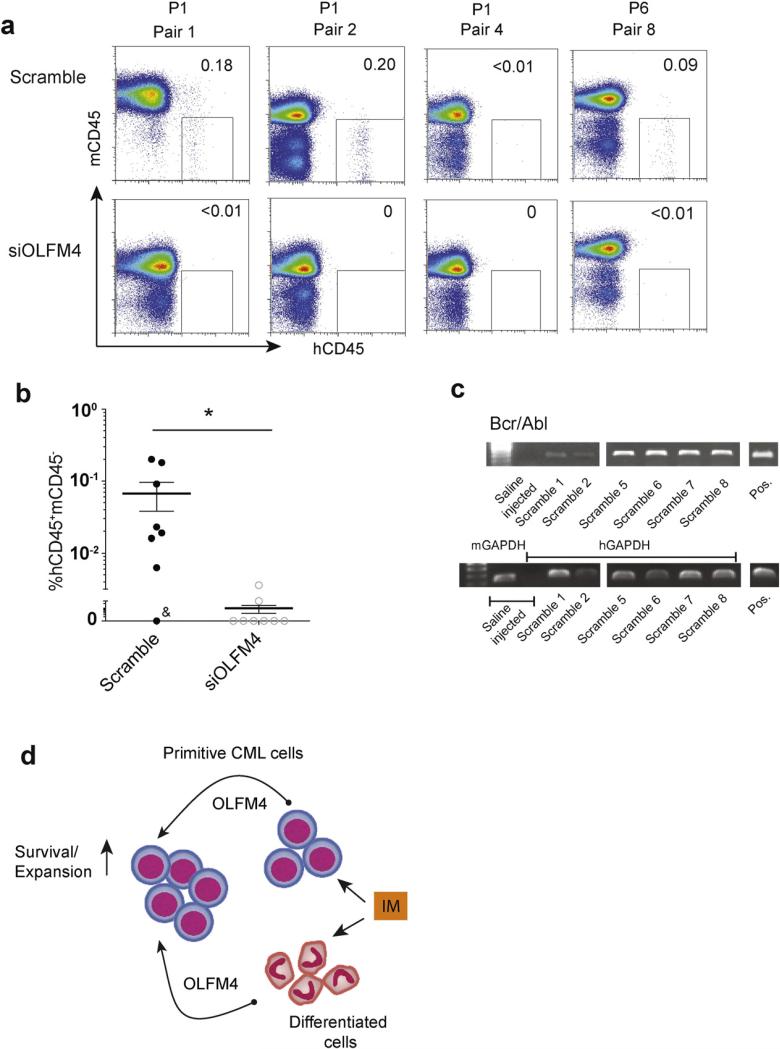Fig. 7.
Effect of OLFM4 knockdown with siRNA on in vivo survival of CML sCD34+. (a) Representative dot plots show human hCD45 vs. mouse mCD45 labeling in freshly isolated bone marrow samples at 12–14 weeks after transplantation. The samples of sCD34+ cells from each CML patient were divided equally, treated with siOLFM4 or scramble siRNA and then injected into retroorbital vein of NBSGW mice. Corresponding mice pairs injected with cells from patient 1 (P1) and 6 (P6) are shown. (b) Frequency of human CD45+ cells in bone marrow of NBSGW mice transplanted with scrambled and OLFM4 siRNA. Each point shows individual mouse. & indicates a mice pair injected with 5000 lin−CD34+ (sCD34+) cells. All remaining pairs of mice were injected with 10,000 sCD34+ cells. The differences between studied groups are significant (* p = 0.0265). (c) Detection of BCR-ABL expression by RT-PCR in human CD45+ cells isolated from bone marrow of six mice injected with scrambled siRNA. Pos = positive control (mRNA isolated from CML iCD34− cells), m = mouse, h = human. (d) The hypothetical model of OLFM4 action on primitive CML cells. OLFM4 produced by CD34+ and CD34− cells supports survival and expansion of the most primitive leukemia cells. Since imatinib enhances the production of OLFM4, it can potentially affect the survival of primitive leukemia cells through modulation of OLFM4-mediated signaling.

